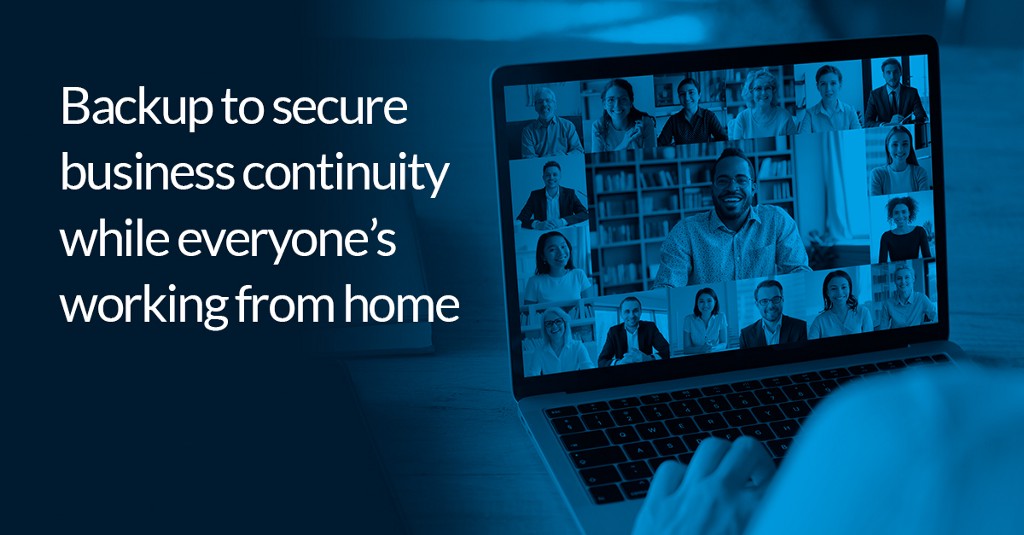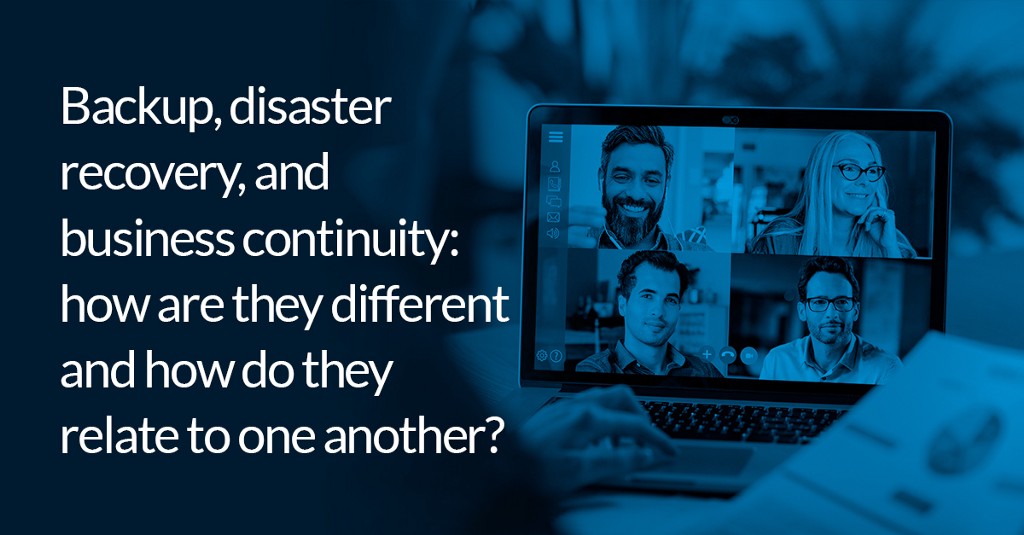Backup to secure business continuity while everyone’s working from home

Now, almost more than ever, technology is a critical part of any business. From software developers and online merchants, to dentist’s offices and construction firms, companies across all industries rely on their computer systems. Unfortunately, when it comes to hardware failures and cyber-attacks, it’s a matter of when not if.
That’s where disaster recovery plans come into play, and luckily it’s as easy as 3–2–1. But first, what exactly does a business need to prepare for?
Protecting your business from deliberate and accidental data disasters
- Loss of hardware. It could be as simple as leaving an important laptop at a conference, or as devastating as a fire or flood damaging your office.
- Cyber crime and file corruption. While users are more tech-savvy than ever, viruses and ransomware are growing more sophisticated too, costing businesses millions.
- Human error. To err is human, and sometimes employees overwrite, modify, or even delete data that should be safe.
- Hardware failure. As reliable as they are, even hardware has a lifespan. Hard drives, CPUs, and all parts of your computer system can and will fail eventually.
Most businesses will store their backups on local or remote servers. Perhaps a backup will be kept on a portable storage device or external hard disk. But a robust and dependable disaster recovery solution includes a clever combination of both.
With the WFH workforce increase, cyber crime is on the rise
As we discussed last week, the COVID-19 crisis has spawned infosec and cybersecurity threats. Whether they’re phishing scams disguised as health information or opportunists looking to attack medical institutions while they’re under huge amounts of strain, criminals are using this time to take advantage of our distraction. Even with vigilance, we need to be prepared for anything.
Increased stress + distracting environment = potential disaster
The world is experiencing one of the most collective stressful moments in recent history. For those with jobs that have transitioned to the home environment, there’s the added pressure of adjusting to a house full of distractions. Scientifically, this is a recipe for mistakes. An employee may click on an email attachment without giving it a second thought. Maybe they see a message from a spoofed account with their colleagues’ name, and assume this was the PowerPoint presentation they were just discussing.
More PCs, more problems
As companies scrambled to shift an entire workforce home, there was also a huge rush on hardware to keep people working. Laptop and peripherals sales soared, leaving nearly all manufacturers with empty shelves and backorders that could take weeks to fill. Whether employees are using their home computers or new company purchased machines, there’s simply a lot more opportunity for hardware to fail or break.
Maybe the laptop was refurbished in a hurry to meet rising demand and suffers a catastrophic hardware failure. Or it’s easy enough to spill orange juice across your computer when your only workspace is standing at the kitchen island. And let’s not talk about what a toddler can do.
What happens at the office when no one is there?
With isolation orders across the world, a staggering amount of office space is currently sitting empty. Even if a member of staff goes in periodically to check up on things, unpredictable events can still occur — and now they may continue unnoticed for a long time. A simple leak from the ceiling will turn devastating if not caught in time. A frayed smoking wire wouldsmoulder for days.
Luckily, you don’t have to predict every possible disaster that could befall you or your employee’s computers. With a simple system your most valuable assets will be safe.
Protecting your company’s critical data with 3–2–1
3 copies of your data
Keeping a single backup is a great step in the right direction, but that backup could fall victim to any one of the issues listed above. Two is even better, but for businesses that want complete peace of mind, three copies of a backup is ideal.
2 different storage types
The next step is ensuring these backups are stored on two different types of storage, like a physical drive and on a cloud service like Dropbox or Google Drive. This eliminates a single point of failure and guarantees that if one fails, you’ll always have the second to rely on. A backup to your backup!
1 copy stored offsite
And lastly, be sure to keep at least one of those copies separate from the other. In the event of a fire or flood, it’s far too easy for two physical storage devices to be destroyed if they’re kept in the same space.
This might sound like overkill, but this industry standard ensures your business will be up and running as quickly as possible following a disaster. Luckily, it’s never been easier to set up a recovery plan. Learn more about the types of backup here, and see how Macrium can secure your business for every eventuality.
Or click here to get started now with a 30-day trial of Macrium Reflect Workstation!


